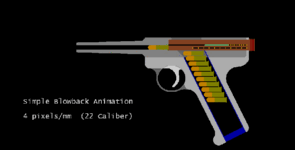- Messages
- 11,840
- Reactions
- 11,103
So the scenario is a m39 marlin,22in barrel and a 10/22 with a 16in barrel
Distance is say 75 yards.
Both guys are shooting good and putting all hits in a baseball sized group
The guy with the m39 ores a hole thru the plywood but the other did not.
I said it would be the extra length of barrel not so much the semi auto action robbing gas. One of the guys figured it would be the action.
Has anyone cronoed? (Is that a word?)this?
Could be both or which one is the big factor?
Thanks
Mike
Distance is say 75 yards.
Both guys are shooting good and putting all hits in a baseball sized group
The guy with the m39 ores a hole thru the plywood but the other did not.
I said it would be the extra length of barrel not so much the semi auto action robbing gas. One of the guys figured it would be the action.
Has anyone cronoed? (Is that a word?)this?
Could be both or which one is the big factor?
Thanks
Mike












